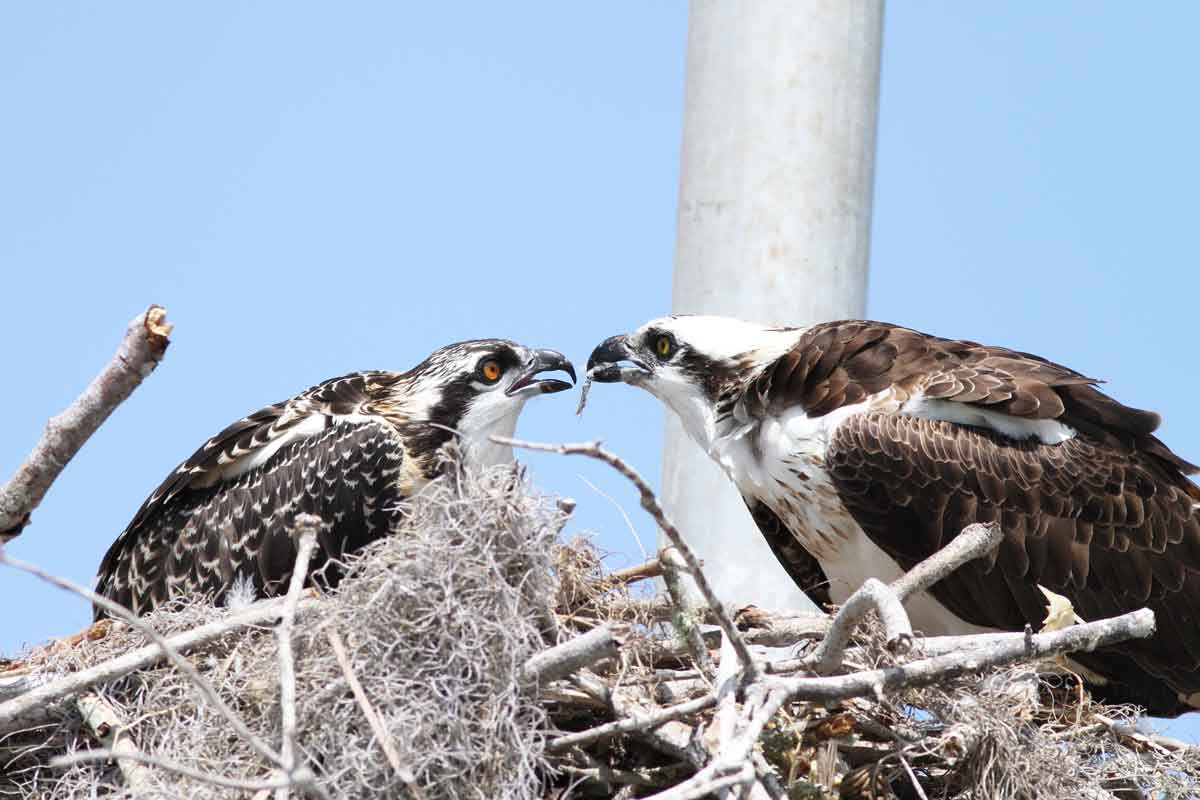Weighing approximately 3 to 4.5 pounds and having a 5 to 6-foot wingspan, an osprey (Pandion haliaetus) is a large bird of prey with a slender body and long wings. Ospreys are distinct from other birds of prey because of their diet of almost exclusively fish and their ability to dive into the water to catch fish.
Ospreys are extremely widespread and can be found on every continent except Antarctica. Most ospreys that breed in North America migrate to Central and South America for the winter. In Ohio, ospreys can typically be seen from about March through September. During nesting season, ospreys utilize both salt and freshwater habitats and will nest anywhere they believe is a safe nesting location. Though ospreys like to nest on the top of tall trees, they commonly use osprey nest platforms such as the one seen in Ariel-Foundation Park. Ospreys build large nests made of sticks which are added to each year.
The osprey nest platform at Ariel-Foundation Park was built by Mount Vernon Nazarene University student, Emily Smith. Materials for the platform were donated by her grandpa, Si Carmean, and the pole was donated and installed by AEP Mount Vernon. The osprey nest platform was installed on July 17, 2017.
Site materials created by Emily Smith.

Photo: Adult osprey feeding chick. Courtesy Dr. Dan Mosher.

Photo:Emily Smith and her grandpa, Si Carmean, stand with the finished platform prior to it being installed at Ariel-Foundation Park.Courtesy Emily Smith.
Building and coordinating the installation of the osprey nest platform at Ariel-Foundation Park was an awesome experience. I hope the platform will serve both ospreys and the Mount Vernon community for many years to come. –Emily Smith
Osprey Facts
Web Link: https://drive.google.com/file/d/1BM1_OPkcpJA6s2LJduAmmJLgA3O1z0ui/view?usp=sharing
DDT and the Introduction of Osprey Nest Platforms
Web Link: https://drive.google.com/file/d/1gp0YJXv5hzb9S_EdqhEdrPmQvyhtfZg2/view?usp=sharing
About the Platform at Ariel-Foundation Park
Web Link: https://drive.google.com/file/d/1LpiyyvL-K3VlRG8acsJ3XTv6eonzp0I0/view?usp=sharing
Ospreys Hunting
Web Link: http://www.arkive.org/osprey/pandion-haliaetus/video-00.html
Cornell Lab of Ornithology: Osprey
Web Link: https://www.allaboutbirds.org/guide/Osprey/id